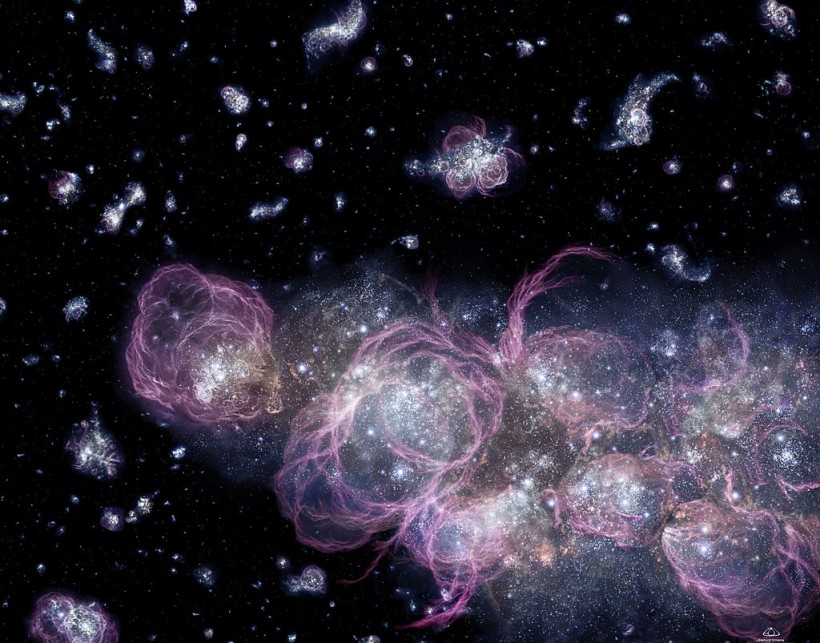Have you ever fancied the idea that somewhere out there, there's another you? That in a faraway mirrored universe, there's another version of yourself.
The mirror universe is usually an interest in science fiction, but more than that, it has also been studied in theoretical cosmology, and with a new study on the Hubble constant, the mirror universe could no longer be just a mere fiction or "concept."

399379 01: This undated artist's impression shows how the very early universe (less than 1 billion years old) might have looked when it went through a voracious onset of star formation, converting primordial hydrogen into myriad stars at an unprecedented rate.
"Cosmic Tension Problem"
The Hubble constant, often known as the Hubble parameter, is a measurement of how fast our universe is expanding. Edwin Hubble was the first to establish this expansion using data from Henrietta Leavitt, Vesto Slipher, and others.
Measurements of this expansion over the following decades were decided on a rate of roughly 70 km/sec/Mpc. Astronomers expected various methods to agree on a single number as our measurements became more precise over time, but this did not happen because measurements have gotten so exact in recent years that they now disagree. This is known as the cosmic tension problem, according to Universe Today.
As of now, the observed Hubble constant values are divided into two groups. Measurements of cosmic microwave background fluctuations point to a lower value of around 67 km/sec/Mpc, while studies of distant supernovae produce a higher value of around 73 km/sec/Mpc. Theoretical physicists are trying to understand why something doesn't add up, and this is where the mirror universe could solve the problem.
The mirror universe concept was first investigated in the 1990s to solve the matter-antimatter symmetry problem. In the lab, we can make matter particles, but we can also make antimatter particles, and they are always delivered in pairs.
Hence, a critical question arises: where did all the antimatter siblings go when particles formed in the early phases of the universe?
This new study examines how it might be used to solve the Hubble conundrum.
Read also: NASA's Hubble Space Telescope's Best Images for May 2022!
"A Novel Idea"
The researchers discovered an invariance in unitless parameters. The fine structure constant, with a value of roughly 1/137, is the most well-known of these. In essence, you may combine measurable parameters in such a way that all of the units cancel out, providing you the same number regardless of the units you pick, which is useful for theoreticians. When cosmological models are tweaked to fit observed expansion rates, many unitless parameters remain the same, which implies an underlying cosmic symmetry.
According to Universe Today, if you apply this symmetry more generally, you can scale the rate of gravitational free-fall and the rate of photon-electron scattering to make the Hubble measurement methods agree. If this invariance is true, it means that a mirror universe exists - one that would have a faint gravitational influence on our cosmos.
However, it must be noted that this study is mostly a proof of concept. This means it only explains how cosmic invariance could help solve the Hubble constant problem, but it doesn't prove it.
This will necessitate a more comprehensive model, but in the meantime, it is a novel idea that could broaden our understanding of the Hubble constant.
Yet, for now, the mirror universe remains a fiction, a theory, and a concept.
Related Article: Invisible Space Walls' "Fifth Force" Discovery Could Solve Cosmology's Greatest Mystery
This article is owned by Tech Times
Written by Joaquin Victor Tacla








